Khrushchev's Tsar Cannon. 406-mm gun "Condenser"
The biggest guns in stories... The 406-mm self-propelled artillery unit of special power "Condenser 2P" (index GRAU 2A3) can be safely called the "Tsar Cannon" of its time. Like the Oka mortar, which had a monstrous barrel length, the Condenser had a minimum of real benefit, but the effect of regular participation in parades exceeded all expectations. Soviet artillery monsters invariably made an indelible impression on foreign attaches and journalists.
True, it is worth noting that the self-propelled 420-mm mortar frightened the foreign guests of the USSR more. Although even one glance at this installation with a barrel length of 20 meters was enough to make the beholder feel a healthy skepticism about whether this artillery system could shoot at all and whether it would not fall apart at the first shot. The 406-mm 2A3 self-propelled gun was a little more modest, so it did not hit the pages of Life magazine, unlike the 2B1 Oka mortar.
Show Kuzkin's mother
"Show Kuzkin's mother" is a stable idiomatic expression familiar to any inhabitant of our country. It is believed that Nikita Sergeyevich Khrushchev introduced the phrase into a wide circulation, using it during political meetings with the American leadership in 1959. So the phrase also received international fame and recognition.
This phrase is best suited to describe the Soviet nuclear artillery program. The program was launched in response to American developments. In the United States, in May 1953, they successfully tested an experimental 280-mm artillery installation, which fired a nuclear weapon at a test site in Nevada. This was the first ever test of nuclear artillery with a real round of ammunition with a 15 kt nuclear warhead.
The tests did not go unnoticed and provoked a fair response from the USSR. Already in November 1955, the USSR Council of Ministers issued a decree on the creation of nuclear artillery. The decree freed the hands of Soviet designers and engineers. The work was entrusted to the design bureau of the Leningrad Kirov plant, which was responsible for the chassis for unusual self-propelled guns, and the Kolomna special design bureau of mechanical engineering, where they began to develop an artillery unit.
Soon, real artillery monsters were born, which they managed to place on a modified chassis of a serial heavy tank T-10M (IS-8). The chassis has grown slightly, increasing by one track roller and one carrier roller for each side. At the same time, the chosen caliber was most striking: 420 mm for an atomic mortar and 406 mm for an artillery installation.
With such a caliber, the artillery systems could show Kuzkin's mother to anyone if the ammunition they fired flew to the target. Fortunately, they did not have to participate in any hostilities. At the same time, it should be said that the country already had the experience of creating 406-mm guns at that time.
Even before the outbreak of World War II in the USSR, as part of the program for the creation of a large ocean fleet it was planned to build a series of super-battleships. It was planned to arm them with 406-mm artillery of the main caliber. The 406-mm naval gun B-37, as part of the MP-10 experimental single-barreled polygon installation, even took part in the defense of Leningrad. Tests and real combat experience of using this weapon allowed Soviet designers to work in this direction after the war.
What do we know about the installation "Condenser 2P"
Today it is very difficult to find reliable technical information about the Condenser 2P artillery installation. Moreover, some of this information is poorly consistent with the appearance of the installations. Fortunately, a large number of photographs have survived to this day, as well as a preserved copy, which is kept in the open air in Moscow in the Central Museum of the Armed Forces.
Almost all sources indicate that the mass of the 2A3 "Condenser 2P" unit is 64 tons. At the same time, the weight of the Oka mortar is indicated at the level of 54-55 tons. Outwardly, the 420-mm self-propelled mortar looks much larger, primarily due to the longer barrel. There are practically no other significant differences in the installations.
Both were built on chassis elements of the T-10M heavy tank, which was originally called the IS-8. The chassis was increased by adding one track and carrier rollers (8 + 4) to each side, respectively. At the same time, the body has been significantly redesigned. The chassis for a self-propelled artillery unit of special power "Condenser 2P" received the designation object 271.
Practically unchanged ACS "Condenser 2P" got the power plant of the heavy T-10M tank. This self-propelled gun was equipped with a 12-cylinder liquid-cooled diesel engine V-12-6B. The engine with a displacement of 38,8 liters developed a maximum power of 750 hp.
Especially for the "Condenser" engineers of TsKB-34 developed a 406-mm cannon, designated SM-54. The maximum firing range was estimated at 25,6 kilometers. A total of four such guns were fired, according to the number of self-propelled artillery units released then. Some sources indicate that the barrel length of this gun was 30 calibers (12,18 meters). This seems to be true, considering that the barrel of the installation is visually significantly shorter than that of the Oka (almost 20 meters).
In the upright position, the gun was guided using hydraulic drives, the guidance in the horizontal plane was carried out only due to the rotation of the entire installation. For more accurate aiming, the gun mount rotation mechanism was associated with a special electric motor. To load the gun with ammunition, special equipment was used. Loading was carried out only with the horizontal position of the barrel.
Specialists from the closed city of Sarov in the Nizhny Novgorod region developed unique ammunition especially for Soviet nuclear artillery. In 2015, as part of the exhibition dedicated to the 70th anniversary of the nuclear industry, visitors were shown a 406-mm nuclear projectile for the ACS 2A3 "Condenser 2P".
A self-propelled artillery unit of special power was intended to disable important targets: airfields, large industrial facilities, transport infrastructure, headquarters and concentrations of enemy troops. For these purposes, Sarov developed the RDS-41 nuclear charge for a 406-mm artillery projectile. On March 18, 1956, this charge was successfully tested at the Semipalatinsk test site. Moreover, the 406-mm atomic projectile was not officially accepted for service.
The fate of the project
Like the 2B1 Oka atomic mortar, the Condenser did not have a successful and long military career. Created in the amount of four copies, the installation regularly, since 1957, appeared in parades. In fact, the role of the "Tsar Cannon" during the reign of Nikita Sergeevich Khrushchev was limited to this. The secretary general relied on missile technology, therefore, with the first successes in the field of creating tactical missile systems, the Soviet Union safely forgot about super-large-caliber nuclear artillery.
Despite this, the unusual artillery systems performed their task. As Yuri Mikhailovich Mironenko, an expert in the field of creating various types of armored vehicles and special equipment at a tank base, who took part in the tests of the "Condenser", wrote, he had very specific impressions of the unusual ACS.
According to Mironenko, the developers did not fully take into account the length and the very large dynamic recoil force that acted on the tracked chassis at the moment a 406-mm rifled gun was fired. According to him, the first shot from the installation was fired in Leningrad at the Rzhevsky artillery range a couple of kilometers from the tram line No. 10. According to the engineer, when testing large caliber installations, citizens were forcibly driven from the street into special shelters.
At the moment of firing from a 406-mm gun, everything that covered the ground within a radius of 50 meters was in the air, visibility was zero for some time. There was nothing to be seen, including the multi-ton artillery installation that had just sent a 570 kg projectile into the air. The specialists rushed to the self-propelled gun and slowed down as they approached, being in deep thought. The sight of what was left of the formidable machine did not inspire people present at the tests.
As a result of the tests carried out with firing a simulator of a nuclear weapon, the following were noted: disruption from the gearbox mountings, destruction of equipment, damage to sloths, rollback of the combat vehicle by several meters. Constructive errors that were made during the development were corrected, but it was hardly possible to significantly improve the situation. The work was largely reduced to fine-tuning the finished samples to a state that allows them to participate in parades.
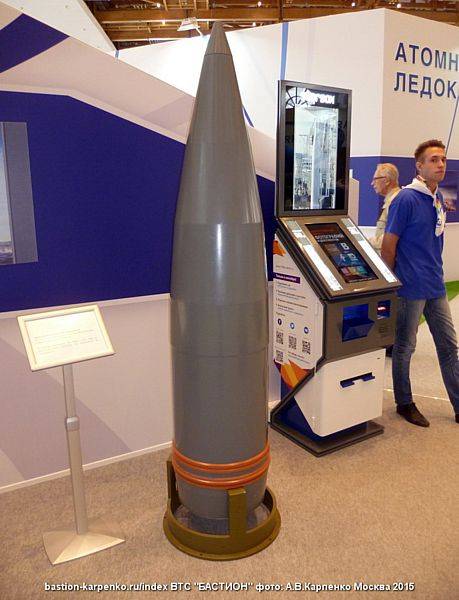
406-mm projectile for self-propelled guns "Condenser 2P", exhibition "70 years of the nuclear industry. Chain reaction of success ", photo: bastion-karpenko.ru
At the same time, even in this state of "parade equipment" the effect of the installations "Condenser 2P" and "Oka" was. During the Cold War, both warring countries often misinformed each other and made a lot of efforts for this. The likely enemy was nervous at the thought that the Soviet Union possessed super-powerful nuclear artillery. The situation was aggravated by photographs in the American press, which showed the Soviet artillery monsters in all their glory.
It is also important that the not entirely successful experience with the creation of super-powerful self-propelled artillery was still useful. Thanks to these developments in the USSR, the same enterprises and design bureaus in a short time were able to create the installation, which was put into service. We are talking about a unique 203-mm self-propelled gun "Pion" (2S7), which was actively used for a long time in the army of the USSR, and then Russia.
- Yuferev Sergey
- www.kpopov.ru/military/army_museum_open_guns
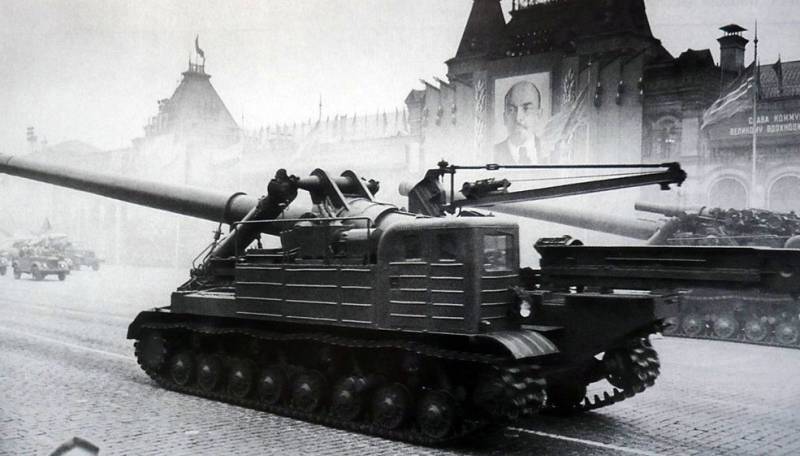
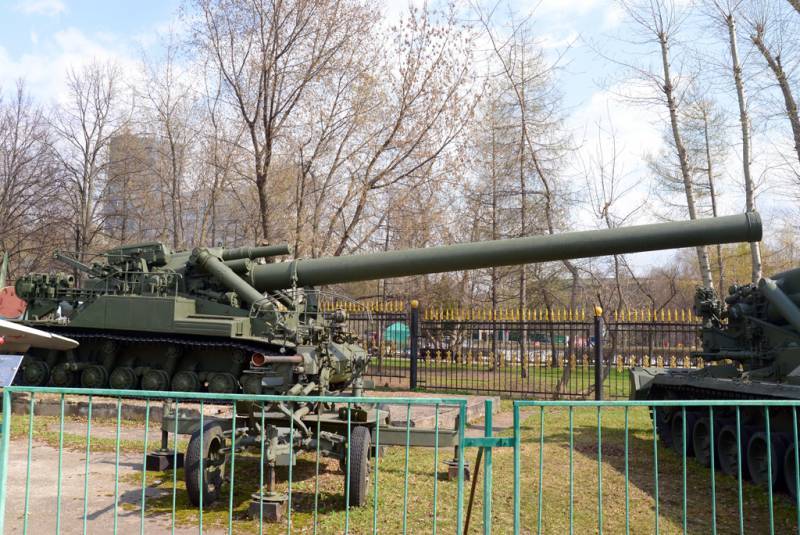
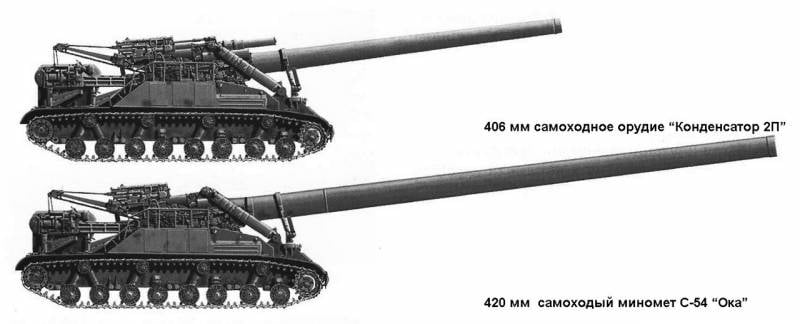
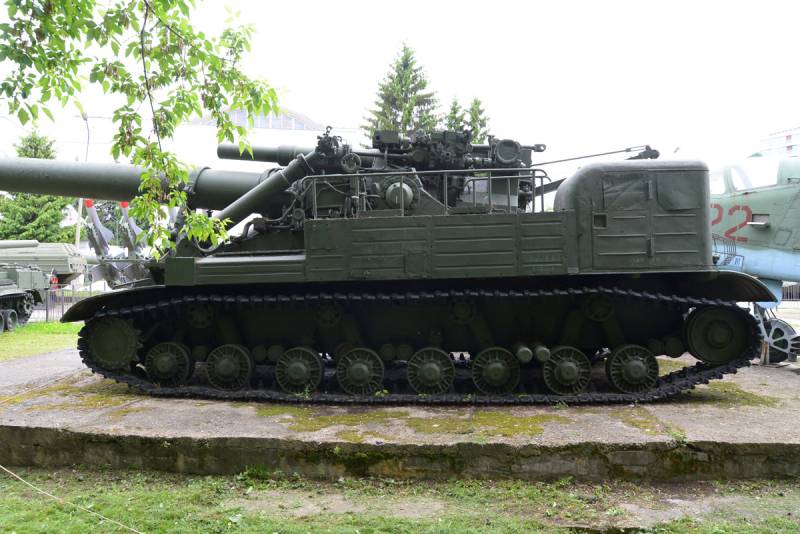
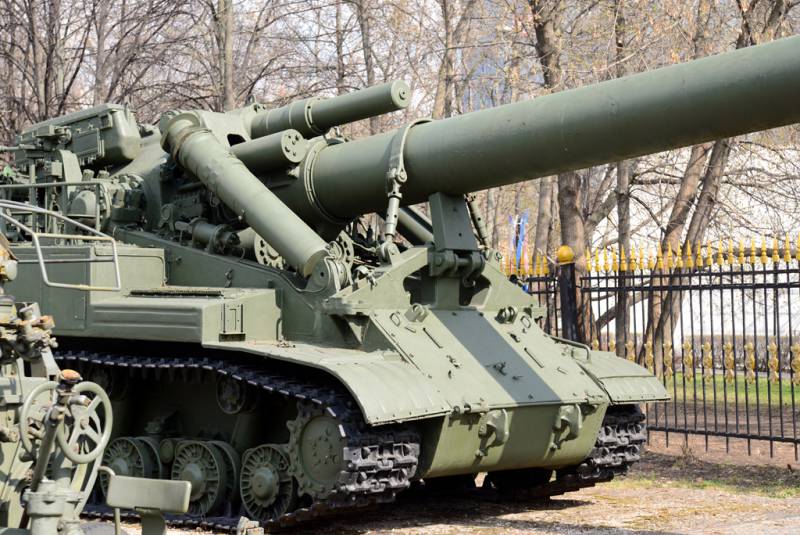
Information